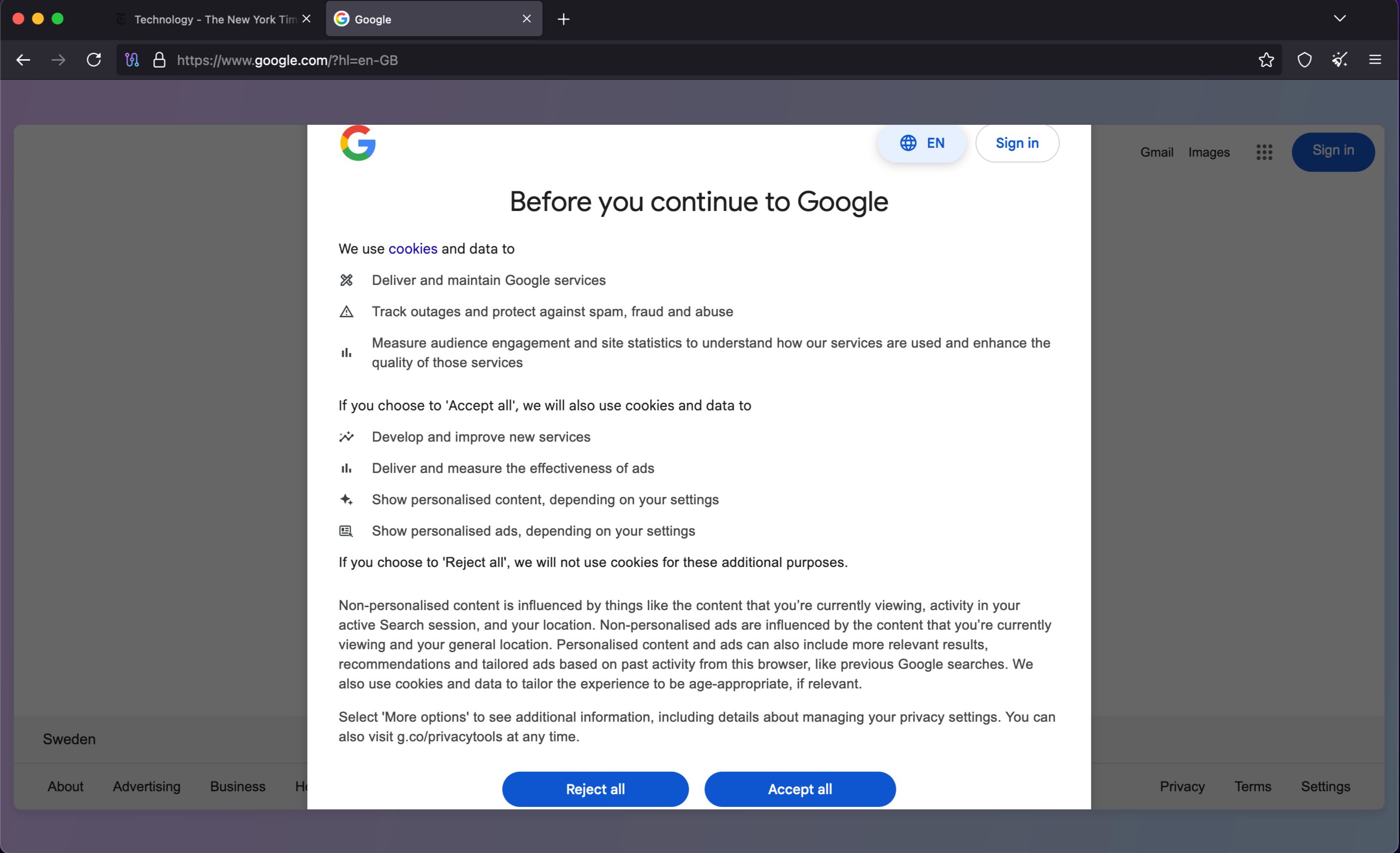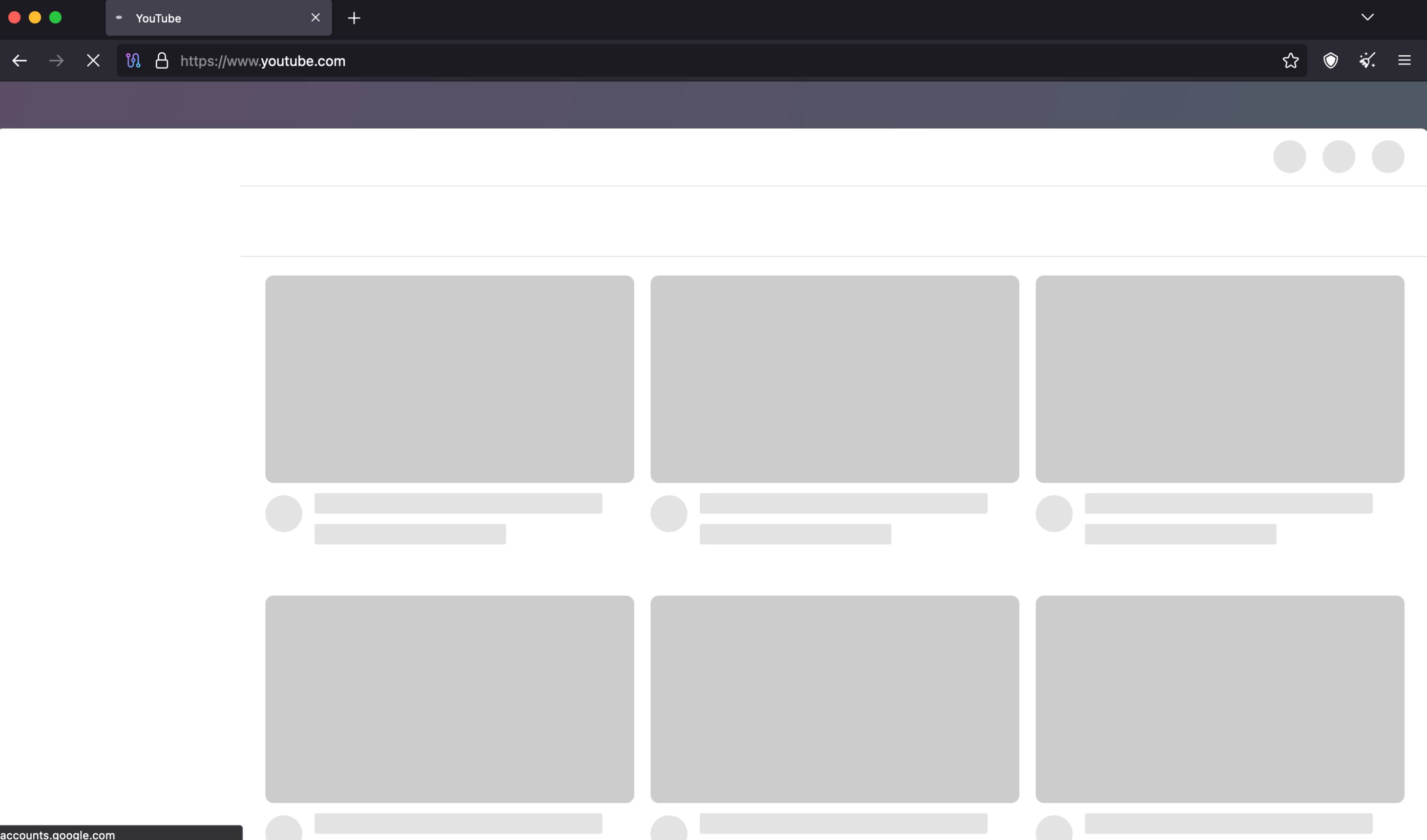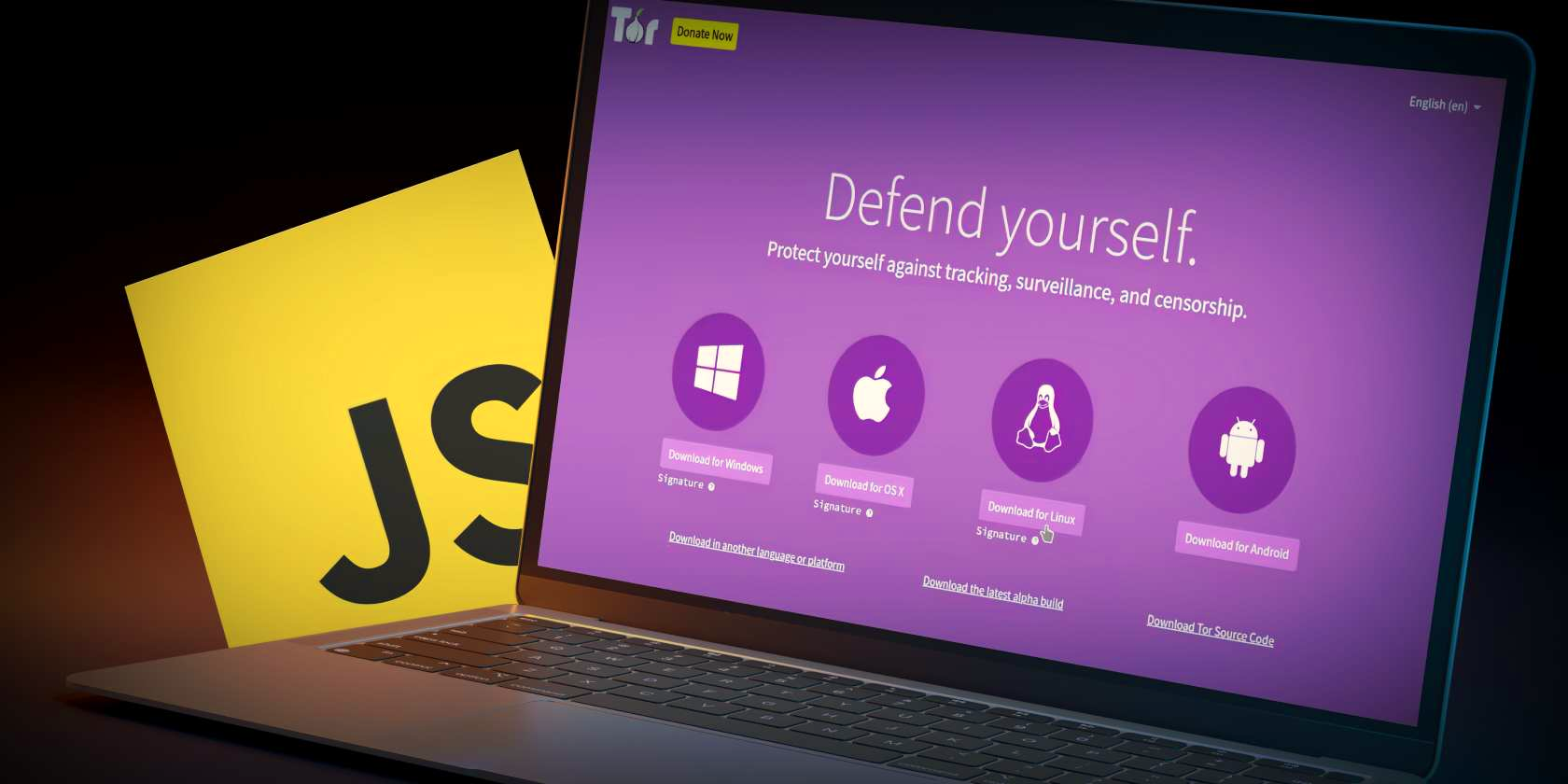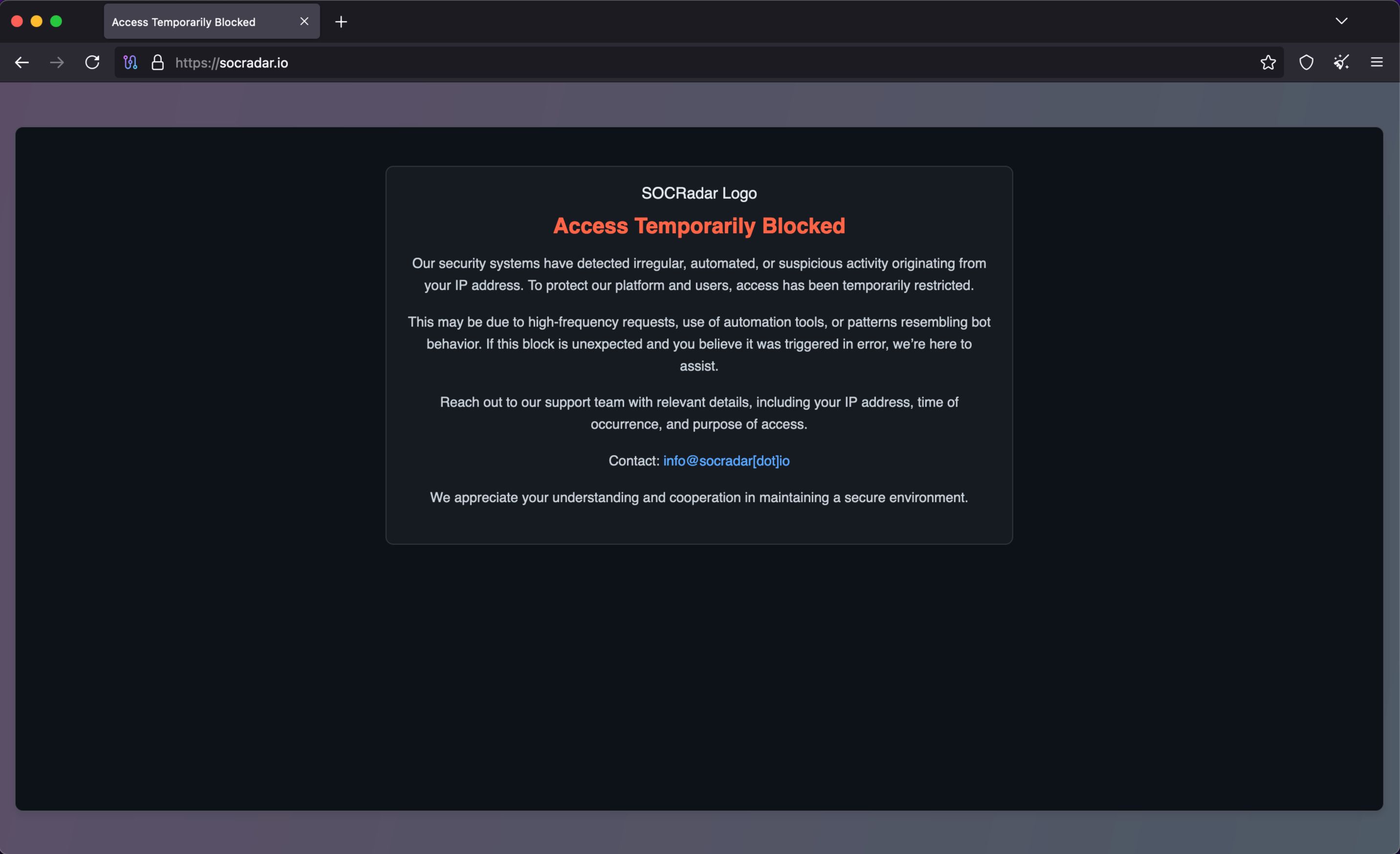Curious about online anonymity, I ditched my usual browser and spent a week exclusively using the Tor Browser. While its privacy protections are impressive, I didn’t expect how much it would change my perception of the internet itself.
What Tor Changed About My Browsing
Tor is easy to set up and use, just like Chrome or any other browser, but it offers something you won’t get out of the box with typical browsers: privacy. Tor gave me a firsthand look at how different the internet feels when privacy takes priority. With privacy at the forefront, several aspects of my browsing experience changed.
1. My Awareness of Online Tracking
One of the first things I noticed with Tor was how much tracking is baked into everyday browsing. When using a typical browser, I didn’t think that every click, search, and scroll was logged.
After all, we’re bombarded with cookie banners and think we’re in control of what’s tracked, right? Not quite. Often, websites don’t disable every tracker, even if you tap the rejection button on the banner.

Most tracking goes on in the background, often silently and without your explicit consent. But with Tor, online trackers were essentially neutralized. It blocks trackers, and it’s eye-opening to see banners I hadn’t seen before. For instance, I only discovered that Google offers a way to opt out of cookies and other tracking when I attempted to access it via Tor. I’d never seen the screen in the above image displayed in my country before!
2. I Felt More Invisible Online
Using Tor gave me a sense of digital invisibility I hadn’t experienced before. Unlike mainstream browsers that link your activity to your IP address, location, or even your browsing habits, Tor anonymizes all of that by bouncing your traffic through several nodes around the world. By doing so, Tor makes it hard for anyone to trace your online activity back to you.

Dive deep
This Is How Tor Works (And What It Really Hides From Your ISP)
Tor secures your data while using its onion routing network, but your ISP isn’t completely oblivious.
As such, using Tor was a refreshing experience. Suddenly, my real location was no longer visible, which meant I had to change the language on websites from time to time, as some used my fake location and displayed content in unfamiliar languages. Ads felt odd as well, because there was no personalization, which was a great thing. It gets even better if you learn how to use Tor safely.
In Tor, I could even reset my identity instantly, adding another layer of anonymity. Achieving such invisibility on mainstream browsers without significant customization is difficult. It’s the key reason why Tor is one of the go-to browsers for browsing the dark web.
3. My Browsing Habits Shifted
Spending a week with Tor made me much more deliberate in how I used the internet. Because I knew I was operating in a more privacy-conscious environment, I naturally started adjusting my behavior to match. First, I avoided logging into personal accounts because it felt counterproductive to the whole idea of anonymous browsing.

Related
5 Free Anonymous Web Browsers That Are Completely Private
Anonymous web browsing is one way to protect your online privacy. Here are the best anonymous web browsers to use.
Whether I used Tor or not, logging into services like Gmail and Facebook meant that my activity was tied back to my real identity. Using Tor also made me aware of just how much information we give away without really thinking about it.
By browsing in a tightly controlled, private environment, I became more cautious about sharing my personal information with websites. If a site required that I fill out a form before granting access to content, I clicked away. I also steered clear of websites that demanded mandatory cookies to proceed.
4. I Gained Access to Things I Normally Couldn’t
Beyond anonymity and accessing the dark web, I didn’t think of any other reason why I would want to use Tor. Surprisingly, it also opened up parts of the internet I couldn’t normally access on the open web. Since it routes your connection through multiple nodes (or relays), the result is that websites don’t see your real location but rather the location of the exit node.

Related
Should You Use a VPN on the Dark Web?
There’s a difference between the surface, deep, and dark webs, with the latter generally considered a breeding ground for illicit activities…
This meant I was able to view content that isn’t typically accessible in my country, whether due to censorship, licensing limitations, or regional blocking. It was eye-opening to learn that the internet isn’t quite the same for everyone, and Tor tries to level the playing field a bit.
Of course, there are other ways to bypass internet censorship—you don’t need to use Tor. And, as expected, I could also access the dark web safely, a key reason why many people use Tor in the first place.
5. Browsing Was Annoyingly Slow
The biggest drawback I experienced in my one-week Tor trial was just how sluggish everything became. My go-to websites, which typically loaded almost instantaneously, took more time, sometimes up to several milliseconds, before I could even see the content. At times, loading took longer than expected and ultimately failed due to timeouts. But this only happened a few times.

This wasn’t due to a slow internet connection—when I visited the same sites using my usual browser, Vivaldi, everything loaded quickly. The Tor network’s multi-hop routing and encryption slow traffic down, but are integral to its privacy.
That additional hopping from one relay to the next, along with the extra encryption and decryption, adds more overhead to what would otherwise be a simple point-to-point connection.
What Tor Didn’t Change
Using Tor was a game-changer in terms of how I used the internet, but it didn’t transform everything. Certain aspects remain unchanged, ranging from practical annoyances to personal habits that held steady regardless of how private my connection was.
1. My Real Identity Online
Tor is secure and anonymous by design, but even with all the encryption layers, my online identity remained the same. While it protected my activity, IP address, and, by extension, my location, that didn’t stop certain websites from requiring my real identity to use their services.
If I logged into Facebook or Gmail, my identity remained the same. I could create an anonymous account for Netflix and other services that I use, but I wouldn’t be able to fake my payment details. So don’t think using Tor is a magic wand that makes you invisible. It takes more than firing up Tor to achieve complete online anonymity.
2. My Need for Speed and Convenience
Even with all the advantages of privacy and the ability to bypass geo-restrictions, I couldn’t ignore how much I craved the speed and convenience of my regular browser. Pages took longer to load, and videos buffered at times to the extent that I couldn’t get anything done for a couple of minutes.
I also encountered issues with multiple websites, which either broke or refused to open. Certain websites, such as YouTube, didn’t work, especially with Tor’s most restrictive Safest security level enabled (which disables JavaScript and other features by default).

Related
How to Disable JavaScript on Tor Browser (and Whether You Should)
You can disable JavaScript in Tor Browser, but should you?
I was sometimes even blocked from some websites when I tried to access them for the first time, as they flagged me as a robot, which became frustrating.

In the end, using Tor as my primary browser for a week has been an eye-opener, especially in terms of how tracking is rampant in the current web landscape. But while Tor offered a greater sense of anonymity and kept online trackers in check, it also came with trade-offs. I wouldn’t use Tor as my primary browser for anything, but I’ll keep it as my backup option for private browsing sessions.








